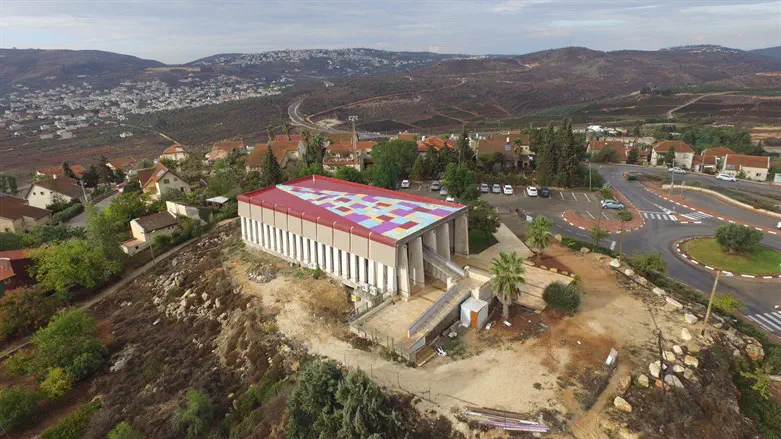
In non-leap years (as this year 5783 is), Parashat Vayikra is invariably the first Shabbat in Nissan. This is appropriate: the Book of Leviticus spans one month, the month of Nissan, in the second year of the Exodus, the year 2449 (1311-1310 B.C.E.), so Parashat Vayikra opens on the first of Nissan.
Both with the month of Nissan and with Parashat Vayikra, the beginning of the Book of Leviticus, we enter a new era in our national relationship with Hashem.
Let us begin with the month of Nissan, which commenced on Thursday:
G-d had decreed that Nissan be the month of redemption. As Rabbi Yehoshua said: “In Nissan the world was created, in Nissan the Forefathers were born, in Nissan the Forefathers died…in Nissan they were redeemed, in Nissan they are destined to be redeemed in the future” (Rosh Hashanah 11a).
G-d decreed to Moshe and Aaron that “this month will be the beginning of your months, it will be the first of the months of your year (Exodus 12:2), on which the Midrash expounds:
“‘Happy is the nation whose G-d is Hashem’ (Psalms 33:12) – ever since G-d chose His world, He determined when its months and years begin; and when He chose Jacob and his sons; He determined the beginning of the month of redemption, in which Israel would be redeemed from Egypt and in which that are destined to be redeemed in the future, as it says ‘Like the days of your Exodus from the land of Egypt, I will show it [the Jewish nation] miracles’ (Micah 7:15); in this [month] Isaac was born, and in this same [month] he was bound, and in this same [month] Jacob received the blessings [Genesis 27]” (Shemot Rabbah 15:11).
The Midrashic commentator Maharzu (Rabbi Ze’ev Wolf Einhorn, Grodno and Vilna, died 1862) explains what the phrase “G-d chose His world” means: the Midrash (Bereishit Rabbah 9:2) cites the verse “He made everything beautiful in its time” (Ecclesiastes 3:11), and deduces that G-d created worlds and destroyed them, until the time came when He created our world, which He chose to be the world which would endure.
So in this best of all worlds, G-d decreed that Nissan be the month of redemption.
It was the start of a new relationship between us and G-d, the time when we were emancipated from slavery to Pharaoh and Egypt, and instead became servants of G-d, bound by His Mitzvot.
It is of course no idle happenstance that the very first national Mitzvah that G-d gave us, even while still in Egypt, was the mitzvah to calibrate our own calendar, with Nissan as the first month of the year (Exodus 12:1-2). A slave, like a prisoner, has no need of a calendar: he sleeps, rises, eats, works, lives his entire life according to his master’s schedule.
So having our own calendar, demonstrating our control over our time, is the very epitome of demonstrating our independence.
This is why of the four New Years in the Jewish year, Rosh Chodesh Nissan is the New Year for Kings and for calculating the Festivals (Mishnah Rosh Hashanah 1:1).
This means that if a King ascends to the throne on the final day of Adar (or Adar II in a leap year), then the next day, 1st of Nissan, he already enters his second year of reign.
And Pesach is the first in the cycle of the Festivals.
And this brings us very naturally to Parashat Vayikra which, as we noted earlier, opens on Rosh Chodesh Nissan.
The final five Parashot of the Book of Exodus (Terumah, Tetzaveh, Ki Tissa, Vayak’hel, Pekudey) recount the preparations for the Mishkan (the Tabernacle) and the subsequent construction thereof. And the Book of Exodus concludes with the actual construction of the Mishkan, Moshe’s erecting it, and G-d’s Cloud covering it and His Glory filling it.
And now, Parashat Vayikra and therefore the Book of Leviticus commences with the actual functioning of the Mishkan and the first sacrifices therein.
The Talmud (Zevachim 112b) and the Midrash (Sifri Devarim, Re’eh 65:8) tell us, and the Rambam (Laws of the Holy Temple 1:2-3) cites as practical Halachah, that originally private altars were permitted, any Jew could build an altar for sacrifices anywhere he wanted. Once the Mishkan was constructed, sacrifices could be brought solely in the Mishkan.
Nevertheless the Mishkan could be constructed anywhere, and of course it followed us through the Sinai Desert. Once we entered the Land of Israel the Mishkan could be constructed anywhere within the Land, but could not be built outside of Israel. And once the Holy Temple was built in Jerusalem, everywhere else became forbidden for any Mishkan or Holy Temple.
So the construction of the Mishkan, at the beginning of the month of Nissan and the beginning of the Book of Leviticus, marks this new phase in Jewish history, the centralisation of Jewish worship. Instead of a collection of individuals we grow into a single nation, united around the Mishkan, the locus of our very direct and immediate and intimate connexion with G-d.